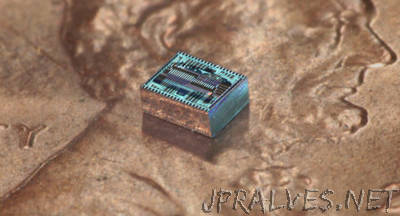
“Traditional cameras—even those on the thinnest of cell phones—cannot be truly flat due to their optics: lenses that require a certain shape and size in order to function. At Caltech, engineers have developed a new camera design that replaces the lenses with an ultra-thin optical phased array (OPA). The OPA does computationally what lenses do using large pieces of glass: it manipulates incoming light to capture an image. Lenses have a curve that bends the path of incoming light and focuses it onto a piece of film or, in the case of digital cameras, an image sensor. The OPA has a large array of light receivers, each of which can individually add a tightly controlled time delay (or phase shift) to the light it receives, enabling the camera to selectively look in different directions and focus on different things. “Here, like most other things in life, timing is everything. With our new system, you can selectively look in a desired direction and at a very small part of the picture in front of you at any given time, by controlling the timing with femto-second—quadrillionth of a second—precision,” says Ali Hajimiri, Bren Professor of Electrical Engineering and Medical Engineering in the Division of Engineering and Applied Science at Caltech, and the principal investigator of a paper describing the new camera. The paper was presented at the Optical Society of America’s (OSA) Conference on Lasers and Electro-Optics (CLEO) and published online by the OSA in the OSA Technical Digest in March 2017.”
